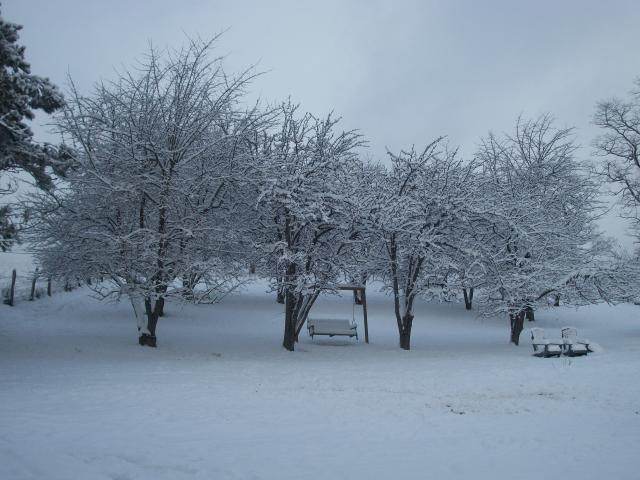
























Jay Green wrote:I can't imagine any grasses that would seriously compete for water at the same depth as a fruit tree






























![Filename: image.jpg
Description: Tree is just a baby but good example [Thumbnail for image.jpg]](/t/23164/a/15802/image.jpg)
Not all those who wander are lost.. -Tolkien





"Instead of Pay It Forward I prefer Plant It Forward" ~Howard Story / "God has cared for these trees, saved them from drought, disease, avalanches, and a thousand tempests and floods. But he cannot save them from fools." ~John Muir
My Project Page

 1
1




Annie McCabe wrote:I've moved back onto my family's farm, and there is an old orchard - about 20 trees, mostly apple. The trees are spaced about 20 feet apart, and grass grows right up to their trunks. What is the best thing to do for them, when I don't have time or energy to really take on the orchard yet? Can I mix clover seed in with the grass? I've mulched around a few of the younger trees with shredded wood and soybean stalks, but my hens tear it right up. The trees are bearing pretty well, but especially after two years of drought, I'd like to help them. Any ideas that are fairly low input, to last a few years until I get other parts of the farm in order?
List of Bryant RedHawk's Epic Soil Series Threads We love visitors, that's why we live in a secluded cabin deep in the woods. "Buzzard's Roost (Asnikiye Heca) Farm." Promoting permaculture to save our planet.

|
Do not meddle in the affairs of dragons - for you are crunchy and good with ketchup. Crunchy tiny ad:
Homestead Pigs Course
https://permies.com/wiki/365748/Homestead-Pigs
|


